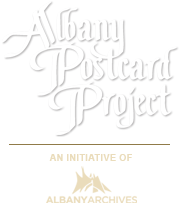History of the American Postcard
The first copyright for private postal cards was given to a man from Philadelphia, John P. Charlton, around 1861. Charlton would have the copyright transferred to another Philadelphian, H.L. Lipman. These postcards were for sale until 1873 when the government got into the postcard business. On May 13, 1873, the United States Post Office issued their first postcard. On the back of the card were the words “Postal Card” and postage of one cent. By law, only government issued cards were allowed to use the term “Postal Card.” The address was written on the side of with the postage, and on the front it was left blank for the message. In 1875, these cards were made available in bulk, leading many businesses to purchase them and print advertisements across the front. Before 1893 postal cards were almost exclusively used for business advertising and rarely as greeting cards. The majority of these cards were in New York City, Philadelphia, Chicago and other large cities.
Private Mailing Card Era: May 1898 – December 1901
On May 19, 1898, an Act of Congress allowed publishers privately print mailing cards to sell these cards to the public. The postage would remain the same at one cent. Most Private Mailing Cards were for souvenirs and were seen as early greeting cards. Still, only the address was permitted on the stamp side. The sender would write their message on the picture side.
Undivided Back Era: December 1901 – March 1907
The U.S. Government allowed the term “Post Card” to be printed on the back of the cards instead of “Private Mailing Card” on Christmas Eve, 1901. European publishers expanded, and opened officers in the United States. They started importing millions of their postcards, which were still printed in Europe, to the states. Messages were still not permitted on the back of the card. All writing was still done on the front, usually over the image or within a blank bar next to or under the image.
Divided Back Era: March 1907 – 1915
On March 1, 1907, divided back postcards were allowed for the first time. Finally, the address and message could both be written on the back of the postcard with the powww. This would mean the entire front of the postcard could now be devoted to the image. The first fifteen years of the 20th century would be known as the Golden Age of postcards. An estimated 675 million postcards were mailed in 1908, with the vast majority of them being printed in Germany.
White Border Era: 1915 – 1930
With the beginning of World War I in Europe, Germany would no longer be printing postcards, having England and United States printers fill the void. Along with the lower quality, the postcards were printed with a white border, to save on ink costs. During the war, telephones started to replace postcards as a means of communication, killing the postcard industry. After World War I, the German printing industry was never rebuilt, and yet the United States still had trouble producing a high quality image.
Linen Card Era: 1915 – 1945
By 1930, technology had evolved enough that publishers were now having postcards printed to linen paper stock. The linen gave the postcards a textured look and feel. Linen postcards also proved to be cheaper to produce and allowed for brighter colors to be used for the images. Most linen postcard production ended by 1940, but some publishers would last another five years or so using this method.
Photochrome Era: 1939 – Present Day
A new type of postcard was launched in 1939, Postcards with color photos. It was cheaper to produce and it was a higher quality image. Some postcards from this era continued to have the white borders while others went back to a full image on the front. The Photochrome era continues today, and is produced using similar methods,
